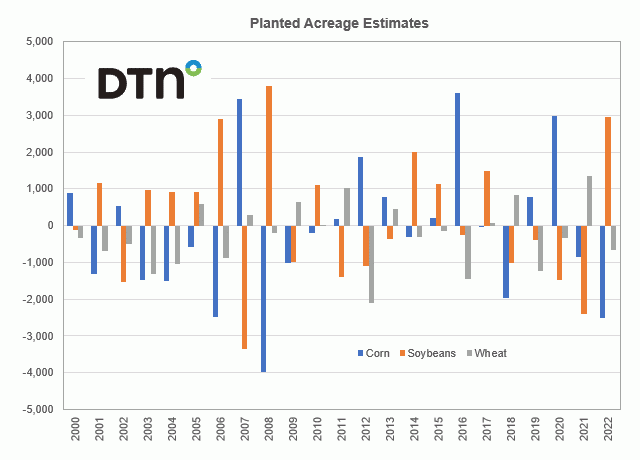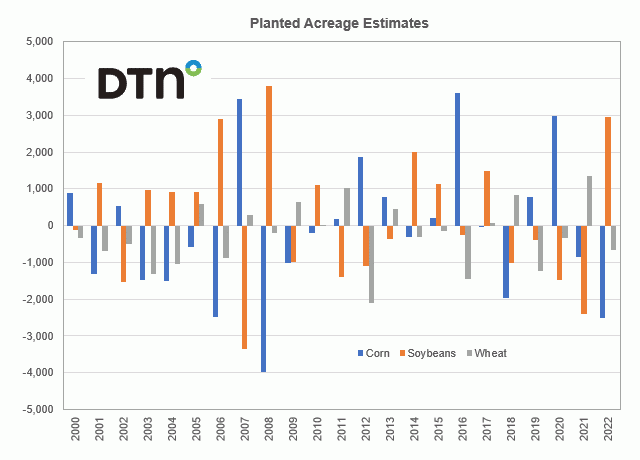Fundamentally Speaking
Change in Planted Acreage Estimates of Major Crops
On February 23, USDA will release its updated projections for the 2023 planted area for the major crops.
These figures will be supplanted by the results of the end of March prospective plantings report for use in the initial 2023/24 balance sheets.
Later this year, the June Acreage and August seeded acreage numbers will then be used.
Note that the USDA in its 10-year agricultural projections released last November estimated 2023 corn seedings at 92 million acres, soybeans at 87 million and all-wheat at 47.5 million while last month's winter wheat seedings number at 37.0 million was quite a bit above trade expectation.
Along these lines, this chart shows the change in planted area projections from the February USDA Ag Outlook Forum to the March prospective plantings in 1000 acres for U.S. corn, soybeans and all wheat.
Last year was interesting in that corn acreage declined by 2.51 million acres between the two reports, the largest drop since a 4.0 million acre reduction in 2008, while soybean acreage rose by 2.96 million, the largest increase between the Feb Ag Outlook Forum projection and the end of March intentions report, also since 2008 when bean area jumped by 3.73 million.
Note that 2008 was the last of a three-year period when there were wide swings between the two reports for both corn and soybeans.
We should also mention that at the time of the USDA's Ag Outlook Forum sessions, the November 2022 soybean/December 2022 corn ratio was trading right near 2.44 which was seen as slightly favorable to soybeans but by the end of March, the SX2022/CZ2022 ratio had tumbled to 2.04 which at that point implied more corn and less soybean planted area.
Final point is that the coefficient of variance which measures the level of dispersion around the mean is highest for corn at 15.0 with soybeans at 8.4 and wheat at 3.3.
This means there is less variance in the change in wheat planted area between the two reports than there is for corn or soybeans, but this explained in part by fact that USDA already has solid data on what winter wheat acreage will be for the upcoming season.
(c) Copyright 2023 DTN, LLC. All rights reserved.
P[L1] D[0x0] M[300x250] OOP[F] ADUNIT[] T[]






Comments
To comment, please Log In or Join our Community .